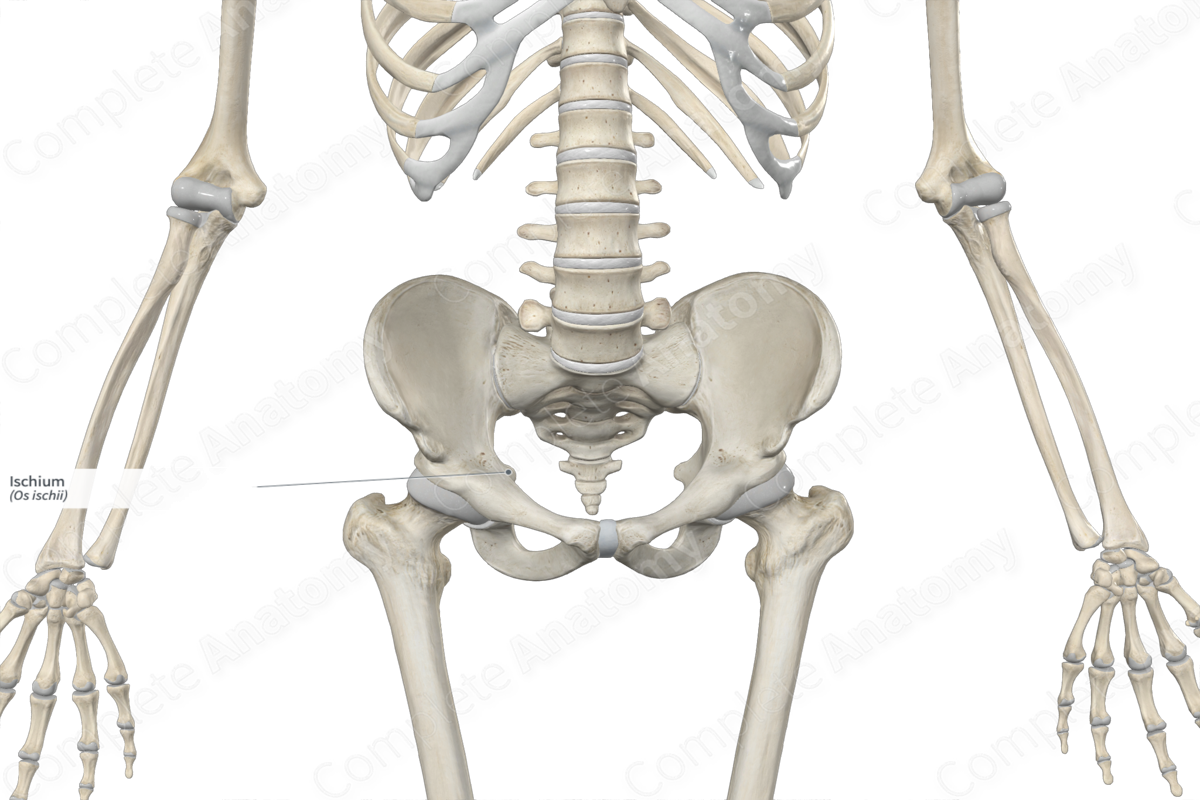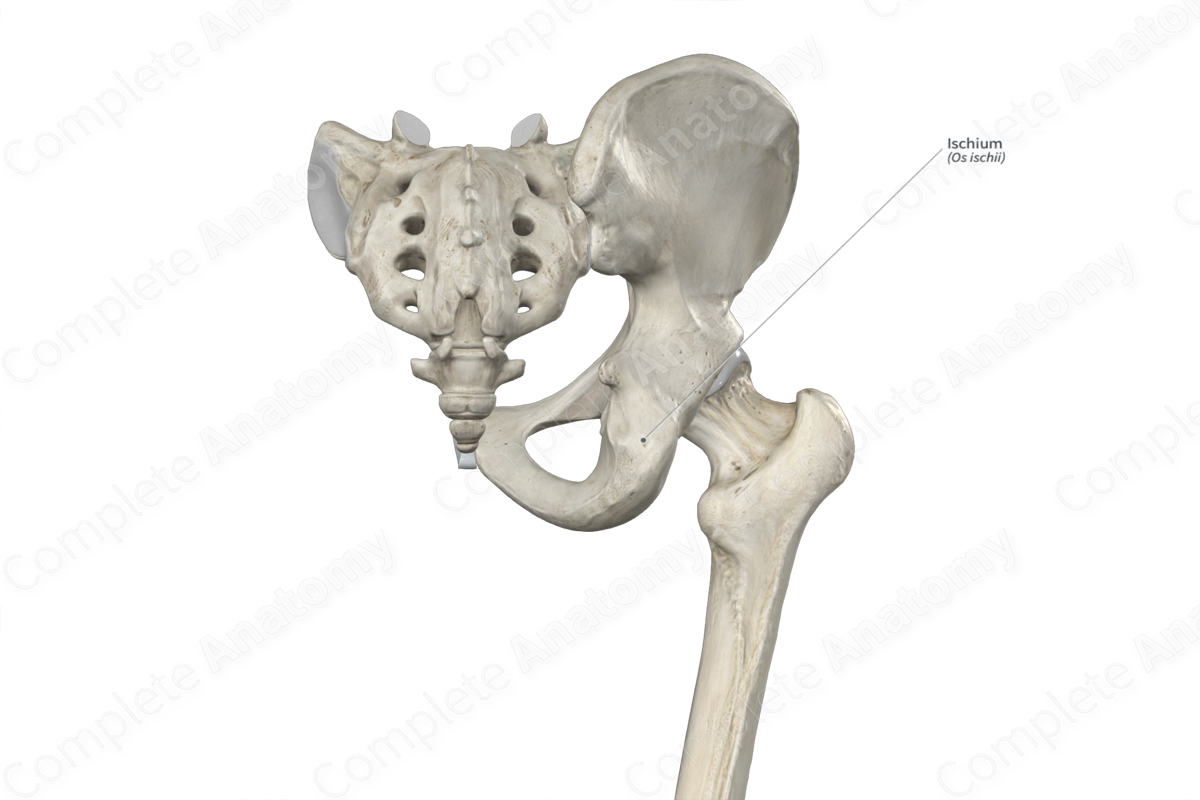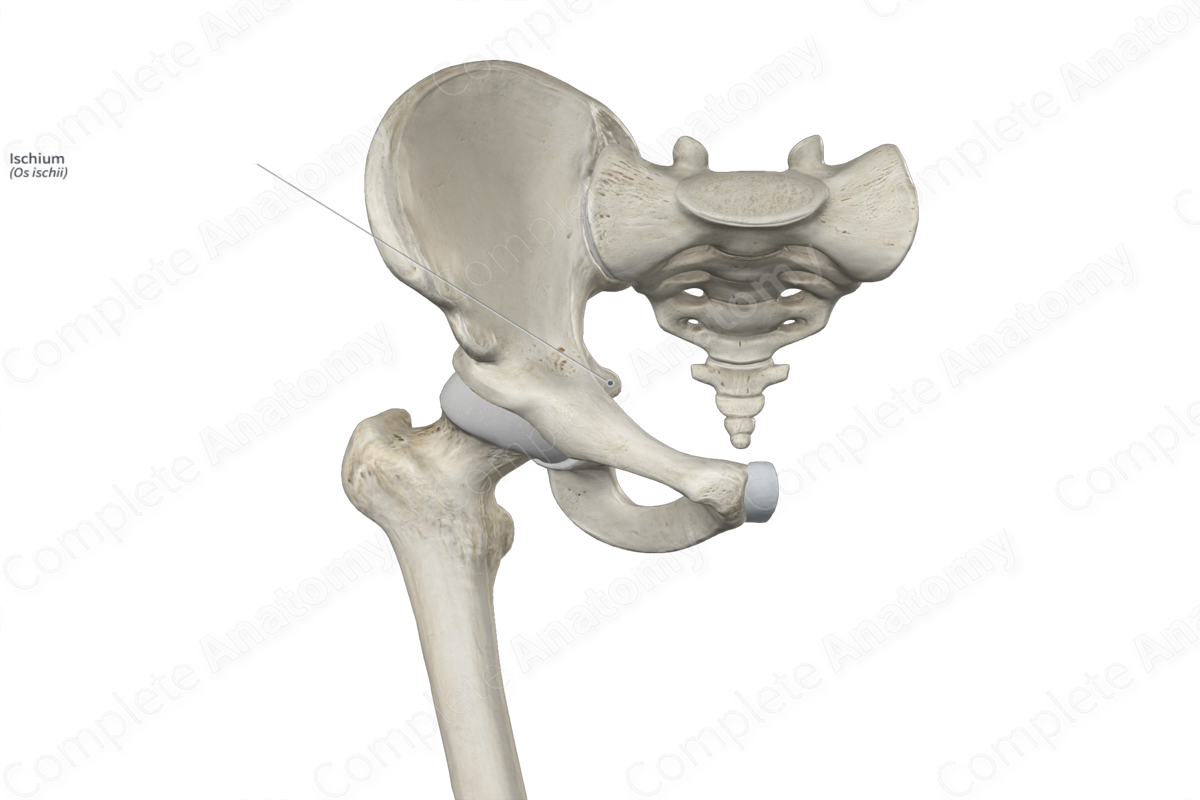
Quick Facts
Location: Pelvic girdle.
Bone Type: Irregular bone.
Key Features: Body, ramus, ischial tuberosity, ischial spine, and greater and lesser sciatic notches.
Articulates With: Ilium, pubis, and femur.
Arterial Supply: Inferior gluteal, obturator, and medial circumflex femoral arteries.
Related parts of the anatomy
Key Features & Anatomical Relations
The ischium (ischial bone) is one of the three bones that form the hip bone, the other two being the ilium and pubis. It’s a thick, irregularly shaped bone that is found along the inferolateral aspect of the pelvic girdle. It is classified as an irregular bone and includes the following bony features:
- parts: body and ramus;
- surfaces: external and internal surfaces of ramus, and pelvic, dorsal and femoral surfaces of body;
- landmarks: ischial tuberosity, ischial spine, greater and lesser sciatic notches.
More information regarding these bony features can be found in the Parts, Surfaces and Landmarks tabs for this bone.
The ischium is located:
- proximal to the femur;
- inferior to the ilium;
- lateral to the pubis.
It articulates with the:
- ilium and pubis, via triradiate cartilage in childhood and fused joints in adulthood;
- femur at the hip joint.
Ossification
Ossification of the ischium occurs at two ossification centers, these are found in the:
- body of ischium, which appears in utero during the fourth month;
- ischial tuberosity, which appears during early to middle adolescence.
These ossification centers fuse with each other during middle adolescence to early adulthood. Fusion between the body of ilium, body of ischium, and superior pubic ramus occurs at the acetabulum during middle to late adolescence, forming the fused hip bone. Fusion between the ramus of ischium and inferior pubic ramus occurs within the seventh to eighth years, forming the fused ischiopubic ramus (Standring, 2016).
Variations
The ischium displays sexual dimorphism, where:
- the right and left ischial spines tend to be closer to each other in males;
- the ischiopubic ramus tends to be wider and more rugged in males.
Surface Anatomy
With regard to surface anatomy, the ischial tuberosity can be palpated in the inferior portion of the gluteal region, during flexion of the thigh at the hip joint.
List of Clinical Correlates
- Fracture of ischium
- Avulsion fracture of ischial tuberosity
References
Standring, S. (2016) Gray's Anatomy: The Anatomical Basis of Clinical Practice. Gray's Anatomy Series 41st edn.: Elsevier Limited.
Learn more about this topic from other Elsevier products
Ischium

The ischiopubic (inferior pubic) ramus is the thin, flat strip of bone connecting the pubis to the ischium.


